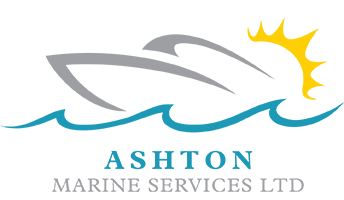A guide to working out electric inboard power
Electric inboards are perfect for canal boats as the torque is instant unlike a diesel engine and they have far less moving parts so less to go wrong.
All electric inboards and outboards are brilliant at moving weight at slow speeds given the instant availability of torque.
Key factors in establishing the power needed for your boat.
To establish the power and battery requirement for your boat we need to understand the following:
- Weight of the boat
- Maximum moving time per day
- How much space you have for solar panels
- Single or separate internal and inboard configuration
- The current prop on the boat/ stopping time required
- How long you want to be moving for between charges
Weight of the boat
Though all electric inboard motors are perfect for a canal boat we need to know roughly what the weight is. Typically we estimate from experience 18-20 tons for a 57 narrow boat and 32-38 tons for a wide beam but these can vary hence why we ask.
Moving time
On a canal boat most users do not motor all day from 8 am to 8pm so we would ask you to think about how many hours the boat is moving per day. Please note we can make your boat move for 12 hours if needed but it does mean more cost in batteries or a hybrid installation!
Solar Panels
In the UK we use around 50% of the output figure during the summer and 25-30% during the winter. By knowing how much space you have on your roof we can establish how much the solar panels will recharge the batteries even whilst moving.
Depending on how many hours the boat is moving for per day and the space for solar panels you have will enable us to work out how many kw hours of batteries you need.
Single or duel battery bank set up
This is a key consideration for many people as they both have pro’s and con’s. At Ashton Marine Services who also boat a lot on the sea we remove single points of failure where possible ie 2 plotters, 2 x vhf radio’s etc If we are using a big ICE engine for speed we will also use an electric back up as these are more reliable and require no servicing.
Canal boats don’t need this level of redundancy so the engine batteries can power everything or you can use your solar power to charge 2 separate battery banks.
Pros and cons
Pro’s single battery set up
- A single battery set up means the solar simply charges all the lithium batteries
- All batteries are in the same place
- There is no need to split the charging between battery banks.
- Slightly less expensive
Cons
- In the very rare event of a problem it could leave the boat with no power unless there is an onboard generator
- We need to understand how much internal power is
Please note that due to the size of the engine compared to a diesel engine we have never found a space issue of installing the batteries in the engine compartment so this is not listed as an issue.
Propellor
This is a key factor in the design of your electric inboard because the torque is instant unlike a traditional diesel canal boat engine.
This means we provide/ and or advise you on the best solution for your boat as we can make it stop quicker if required.
The other way we can do this is simply give you a few more kw of power up to a maximum of 50kw.
Please remember that this is a key part of your design, not just for boat handling but also the more efficient we make this for you the less power is needed and hence reduces costs and / or increases the range.
Hybrid or 100% electric
Like other companies Molabo offer both solutions but want to make you aware of key considerations.
With increased solar efficiency the first thing we recommend is working out if you requirements actually need a hybrid solution as it adds cost, noise and servicing. In most cases this will come down to a few key questions
- How much internal and engine kw of power are needed before recharging
- How much solar energy can we generate
- Do you want an extra bit of redundancy
For most users there will be no need for a generator unless the boat is moving more than average or solar is limited. If it is a requirement we are happy to help you work out the best options as there are a few considerations ie:
- Where will it be situated
- Kw output vs how long it would need to run to provide the required amount of power
- Noise level
- Ventilation
- Servicing intervals
- Cost
Summery
We hope this page gives you an incite into how we specify electric inboard solutions for canal boats
Ashton Marine Services are open 7 days a week and we are happy to answer any of your questions by email at info@ashtonmarineservices.co.uk or call on 0759 5638185
